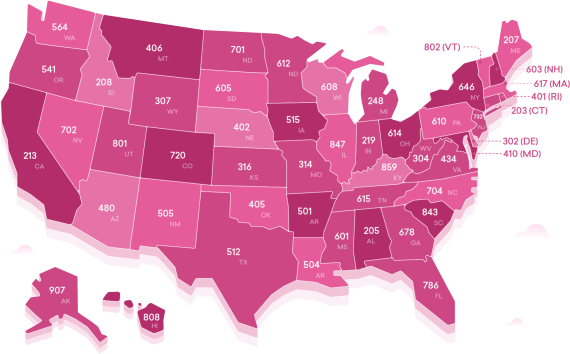Believe it or not, matching an 844 area code to a specific location can be more complicated than it should be. Area codes are continually updated, overlaid, discontinued and split from other regions. This article explains how to keep track of these changes so that your call can get through!
First of all – let’s cover some background on area codes. The three-letter prefix that we’ve come to recognize as a long-distance dialing code is a number that’s assigned by the North American Numbering Plan, which governs telephone numbers in the United States, Canada and parts of the Caribbean under British or US government.
Area codes only need to be used in conjunction with the local number in one of these circumstances:
1. The caller is outside the region which the area code covers.
2. The caller is dialing from a cellular phone that doesn’t call from a local tower – instead, using it’s “home base” tower.
3. The caller is placing dialing from within a region that has overlapping area codes – this is common in larger cities and metropolitan areas.
These area codes are frequently overlaid with others, split from another to allow for more numbers due to population increase, or discontinued or even relocated to avoid long-term conflicts in the region – as decided and dictated by the North American Numbering Plan (NANP).
Note that an area code cannot begin with a 0 or 1 because each digit represents either feature codes or the North American long distance code. Preceding 1995 all area codes had either 0 or 1 as the middle digit, whereas all new codes from 1996 and onward use 2 through 8.
Additionally, the last two digits of any area code will always be different from one another. So you will never find an area code with the format “322” or “744” for example. This includes, obviously, numbers that would end with “11”, as this particular arrangement is reserved for specific resources or emergency access services such as “911” emergency help, or “411” directory assistance.
So with all of the fluctuation happening with area codes – how can you stay on top of the changes so that the next time you need to make a long-distance call, you’ll have the right number to dial?
You need to go directly to the source of the information – NANP.
Their website is available by doing a search in Google for “NANPA”, which stands as an acronym for “North American Numbering Plan Administration”.
Specifically, you’ll want to use their user-friendly map database, which displays area codes by state or region. (Canadian map is also available). This is available directly on the home page (just click the image of the map). They have a detailed map index of the USA, and a link to a Canadian area code map.
This is a crucial site to have bookmarked or saved in your browser, because you’ll be able to stay on top of updates, changes and adjustments to the NANP as they happen.



